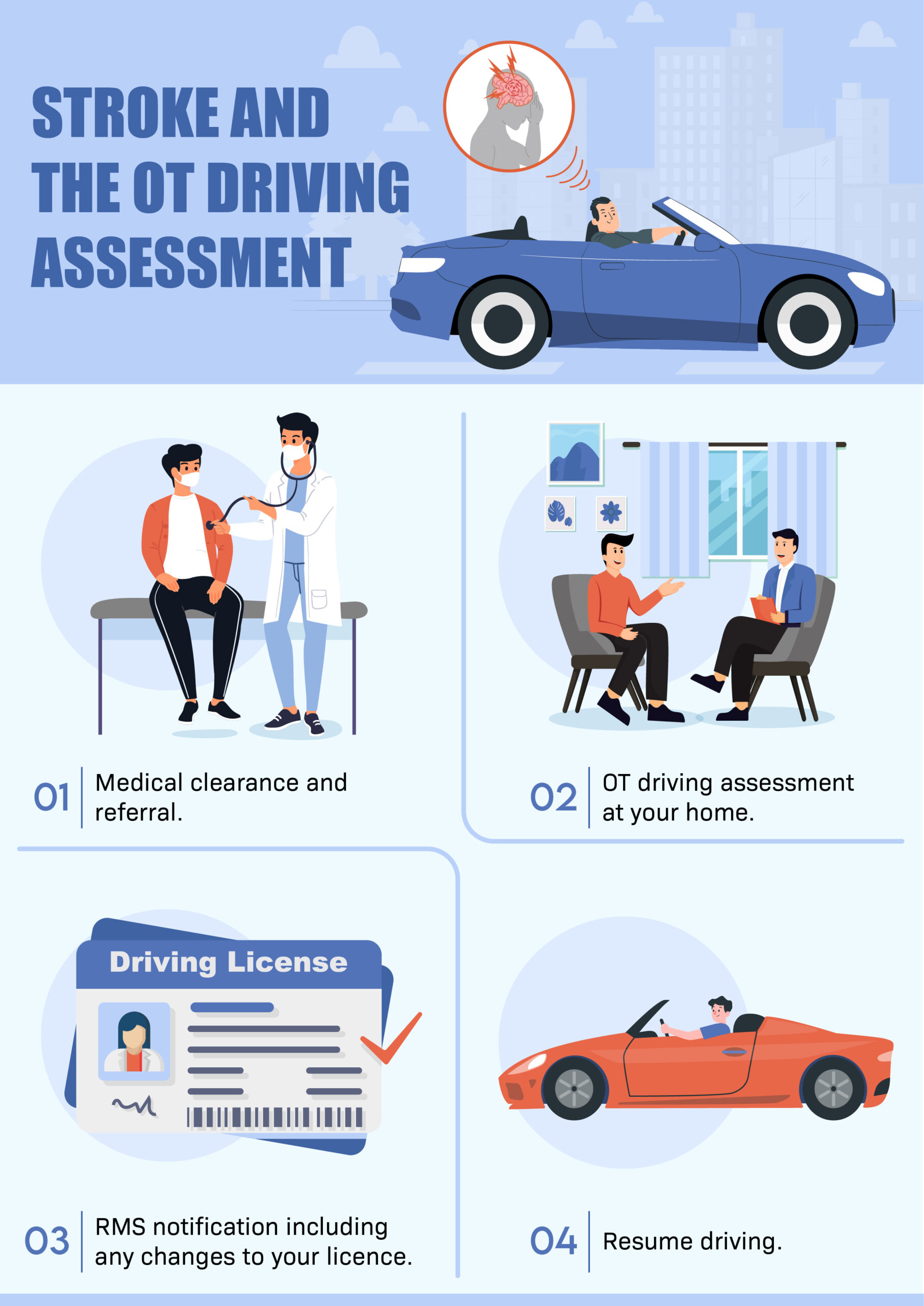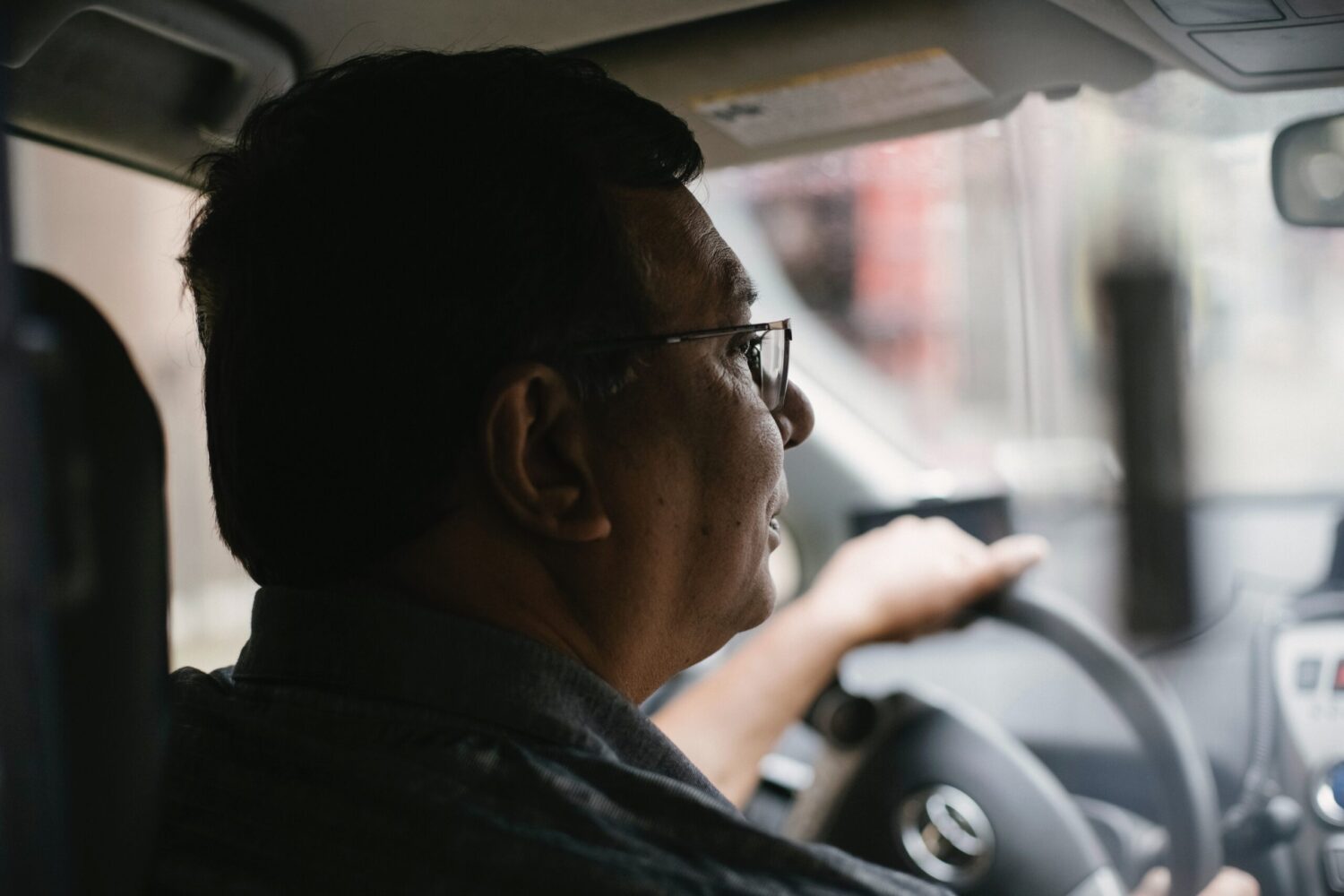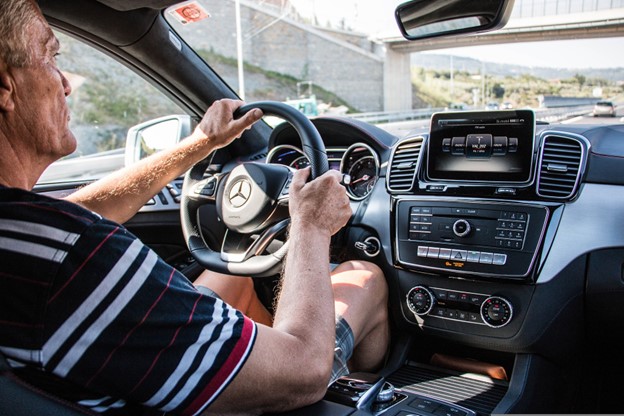How you might be affected driving after a stroke
Stroke can affect the three areas required to operate a vehicle; it can affect your vision, your cognition (thinking) skills, and your physical abilities. Driving after a stroke is a delicate process that must be carefully planned and assessed.
Operating a vehicle is a complex task requiring good vision and motor skills, decision-making and judgment, communication with other drivers (such as signalling), attention, concentration and multi-tasking abilities. Suffering a stroke incident can affect all of these skills.

If you have had a stroke in one part of the brain or another, that area may still be working well for you when it comes to getting behind the wheel —but other factors might not work so well. For example, if your left side was affected by the incident, but your right side was not, shifting gears might become more complex. This is because the movements would come from only one hand rather than two hands working simultaneously on both sides of the body. Therefore, the rehabilitation process will vary from person to person, depending on how the incident has impacted your ability to drive.
Confidence in your abilities before you get behind the wheel
It is crucial to know how to operate a vehicle safely and confidently without worrying about another incident or hurting yourself or someone else.
The first step in driving after a stroke is to talk to your doctor. Therefore, it’s important to have an open and honest discussion with your doctor about how you feel regarding your driving abilities after a stroke. They will be capable of giving you advice on what steps are best for your situation. Your doctor will also conduct necessary medical tests and assessments to discover if you have any side effects following the incident.
Considerations for the caregiver
If you’re the caregiver of someone who’s recently had a stroke, it might not be a good idea to wait for them to ask about getting behind the wheel again. This medical condition is one of the dominant causes of severe disability in adults and can create immediate challenges for anyone trying to live independently. For example, it can cause weakness or paralysis in the limbs on one side of your body, making it difficult for you to operate a car safely.
But if you’re the caregiver, there’s no need to wait around until your loved one asks about getting their license revoked or renewing their driver’s license (or whatever else they might need to do).
Instead, talk about how they feel about being behind the wheel again—and if they’re comfortable operating a vehicle.
Medical clearance is necessary to drive after a stroke
If you have had an incident and are unsure if you are ready to drive, it’s always a good idea to ask your doctor for advice. They can assess whether or not your condition is stable enough for getting behind the wheel, and they may be able to refer you to driver-trained occupational therapy (OT) services in your area. Often, your doctor will also inform the RMS that you had an incident, as they are obligated to report any medical conditions potentially affecting a patient’s driving.
Getting medical clearance is necessary before you can start operating a vehicle again to prevent you from getting at risk of having another incident. This also applies to transient ischemic attacks (TIA). Your doctor will perform medical assessments that look at your visual, cognitive and physical abilities after a stroke. You will often see a neurologist who is a specialist in this area.
If your doctor does not give you medical clearance to drive, you should take time off before operating a vehicle again. Depending on your situation, your doctor may want to provide more time for your body to recover following the stroke, or they may refer you to other medical specialists for further assessment. While delays in returning to driving after a stroke can be frustrating, your doctor is obligated to ensure that you only return to the wheel when you are medically stable.
When do I need an OT driving assessment?
If your doctor clears you for driving after a stroke, they will usually give the following advice:
Once a rehabilitation program has been established, you will have to undergo an OT driving assessment after a stroke. This is because the most thorough way to determine the effects of driving after a stroke is to observe the person as they operate the vehicle. As it is a practical task that doctors don’t specialise in, the driver-trained OT is the most suitable to complete this assessment. Indeed, the OT driving assessment is endorsed by the RMS in NSW to fully determine medical fitness to operate a vehicle.
The OT driving assessment is comprised of two parts:
1. Off-road test looking at your visual, cognitive and physical skills and abilities.
2. On-road test whereby you will drive under the observation of the OT and driving instructor.
The OT sends the report to the RMS, who will then action the OT’s recommendations.
Driving after a stroke with vehicle modifications
If the stroke has affected your physical abilities to operate a car, the driver-trained OT will prescribe appropriate vehicle modifications so you drive according to legal standards. In such cases, the OT driving assessment’s goal is to determine the vehicle modifications you require. Once the OT has prescribed your modifications, you will undergo driving lessons to learn how to drive with the changes. During this period, your licence is downgraded to a learner’s licence, as you have lessons in preparation for the RMS disability driving test. Once you can drive safely with the modifications in all traffic conditions, the final step to driving after a stroke is to undergo the RMS driving test. When you pass this test with the RMS, your licence will upgrade to your previous C class and endorse your modifications on your licence. You will legally be required to always drive with your modifications from that point forward.






